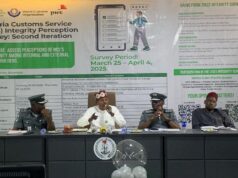FRI, FEB 07 2020-theG&BJournal– Analysts and investors are still baffled at the central bank’s decision in October 2019 to bar local non-banks from buying CBN OMO paper and the question frequently raised when they gather to discuss is- where is the CBN going with its policy?
The outcomes are skewed to the negative and if you ask Simon Kitchen, Head of Macro-Strategy at EFG Hermes Research at EFG Hermes, ‘’the macro context is still poor, with recent decisions unlikely to create conditions in which the private sector can thrive.’’
The Kitchen’s assessment maps the likely impact of the policy on the Nigerian currency, pension fund assets and the equities market and his conclusion is understandable. He sees ‘’no reason to turn more bullish on the Nigerian market until economic policy becomes less contradictory.’’
He reckons that in the meantime, weak fundamentals will mean that the authorities need to work hard to attract and retain foreign portfolio investment.’’
What is particularly of worry to many analysts including EFG Hermes is that only a small amount of liquidity from maturing CBN bills (OMOs) has gone into the stock market, supporting the view that the recent performance can be largely explained by dividend hunting.
Even more worrying is the decision by the National Economic Council (NEC) in late January to borrow NGN2trn from the pension funds to finance infrastructure investments. Industry watchers called the move ‘’strange.’’ That amount is nearly identical to the NGN2.1trn that PFAs currently hold in CBN bills (OMOs). Already about 80 percent of total pension funds-about N7.08 trillion is in the Federal Government’s purse as at November 2019.
The problem this presents to Nigeria’s PFAs is that they are going to face a barrage of requests from the FG in 2020 given its infrastructure finance plans. The FG is legally required to borrow 20 percent of the fund to address national issues. What this means is that the PFAs are going to keep financing the government rather than allocating savings to listed companies.
The latest data from the Central Bank of Nigeria reveals Nigeria’s 364-day treasury bills have fallen to 5.2% since the OMO decision, the lowest in almost a decade, driven down largely by increase in demand and the dearth in investable funds available to investors. The result is that the opportunity cost of holding USD has collapsed and pressure building up again on the USD/NGN. Consequently a huge spread has opened between the yields offered to foreigners – still around 14% on one-year paper – and that for locals, and Nigerian bond funds that invest in Eurobonds has also grown.
But it’s unclear whether this is a worry to the Central Bank that is resolute in their liquidity control measures to keep the Foreign Portfolio Investment positive.
twitter:@theGBJournal|email: info@govandbusinessjournal.com.ng|
Subscribe
Login
0 Comments
Oldest









